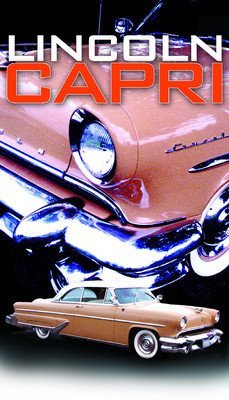Luxury Lincolns doubled as race cars in the 1950s
Unless you were one of the few lucky baby boomers who had wealthy parents, you rarely, if ever, received the privilege of riding in an honest-to-goodness luxury car.
Most of us were plopped into the back seat of a bare-bones sedan or coupe -- often a second-hand model -- that became our personal trampoline or wrestling ring long before seat belts became the law of the land.
In the 1950s, the majority of new cars sold were virtually devoid of options. Plain-Jane styles outpaced opulent by a wide margin, which meant that gas-tank-draining V-8 power, automatic transmissions, radios, whitewall tires and even heaters and defrosters in some cases, were passed over, while mom and dad scrimped and saved to come up with a sufficient down payment to satisfy the bank or finance company.
For those with the means -- usually doctors, lawyers or successful business entrepreneurs -- luxury-car ownership represented real status in the community. Few outside this professional pecking order would even consider shopping for such a vehicle, even if they had the money to do so.
But, despite being built in limited numbers, luxury cars were still seen by the manufacturers as a hot commodity.
For example, in the early days of NASCAR competition, factory-supported drivers piloting V-8-powered Chrysler, Cadillac and Lincoln stock cars were the most successful on the track. Elsewhere, a nearly bone-stock Cadillac coupe was raced at the Le Mans (France) 24-hour endurance race where it finished a respectable 10th.
The Lincoln-Mercury division of the Ford Motor Co. took an ambitious route to showcase its high-end products. In this case, the route consisted of 2,000 miles of newly paved road that ran from the southern edge of Mexico to the United States border. From 1950-'54, the Carrera PanAmericana, as the endurance race was called, ran the entire length of the highway. It was actually a five-day event broken down into stages with the cars leaving at one-minute intervals.
In its brief five-year history, the race attracted top American and European drivers. Makes such as Ferrari, Mercedes-Benz, Lancia and Maserati mixed it up on this Mexican roadway along with Caddys, Buicks, Hudsons, Chryslers and, of course, Lincolns.
In 1952, the first year of Ford's direct involvement, Lincolns swept the first four spots in the race's stock division. The following year there were a total of 22 of these powerful luxury Lincolns entered, and again the top four finishers were driving that brand.
The fifth and final year of the big race spelled near disaster for the Lincoln team, as one by one, the cars dropped out with engine failure. The eventual winner, an independent amateur named Ray Crawford, managed to carry the Lincoln name to glory one last time despite the lack of corporate technical support. The only remaining factory-backed car finished right behind him.
The Lincolns of the early-to-mid 1950s were ideally suited for long-distance racing. Their low-revving V-8 engines and three-speed automatic transmissions could cruise all day long at speeds of up to 130 mph while the plush interiors provided such driver comfort that fatigue was rarely a problem.
What time they lost in the tight turns and mountain passes of Mexico were more than made up for when the road ran straight. The only real negative was fuel economy: 4 to 5 mpg. To compensate, a 55-gallon gas tank was installed behind the front seat, in addition to the 23-gallon stock tank.
By 1955, the Detroit automakers began competing on the NASCAR circuit with V-8-equipped Chevys, Fords and Dodges. With big horsepower now available in lighter, mass-produced automobiles, the days of luxury-car racing came to an abrupt end.
The 1955 Lincoln Capri was basically the same car that was used to conquer the Carrera PanAmericana road race. Its 225-horsepower 341-cubic-inch cam-in-block V-8 was slightly larger than the one installed in the 1952 to 1954 versions, which helped deliver slightly better acceleration for one of these 4,400-pound heavyweights. Available in sedan, coupe and convertible, the Lincoln could be optioned with air conditioning, power windows and overstuffed leather seats. You could have also ordered the Multi-Luber, a device that allowed the driver to send grease to the various chassis components by merely pushing a button from inside the car.
At a base price of nearly $4,000, a four-door Lincoln Capri was more than twice the price of a base-model Ford Custom. Sales for 1955 fell short of 1954 levels, perhaps indicating that focusing on performance instead of luxury features was not necessarily the best marketing approach for the brand.
But for those pillars of their communities who wanted proven high-speed capability, the Lincoln's well-earned reputation was second to none.
Malcolm Gunn is a feature writer with Wheelbase Communications. He can be reached on the Web at www.wheelbase.ws/mailbag.html. Wheelbase supplies automotive news and features to newspapers and Web sites across North America.






















